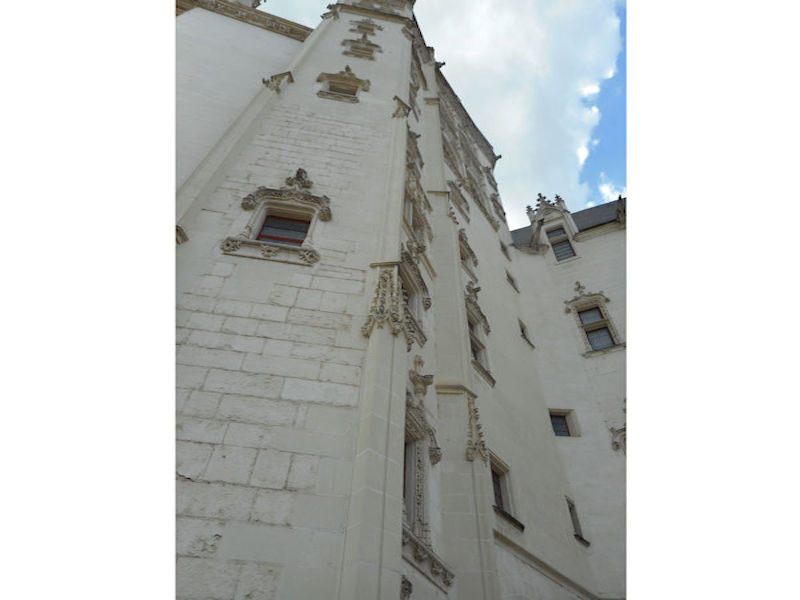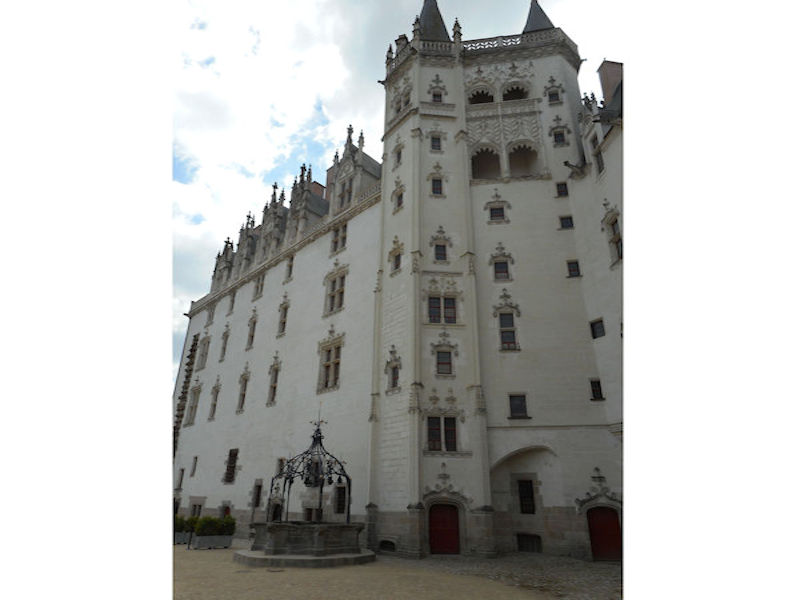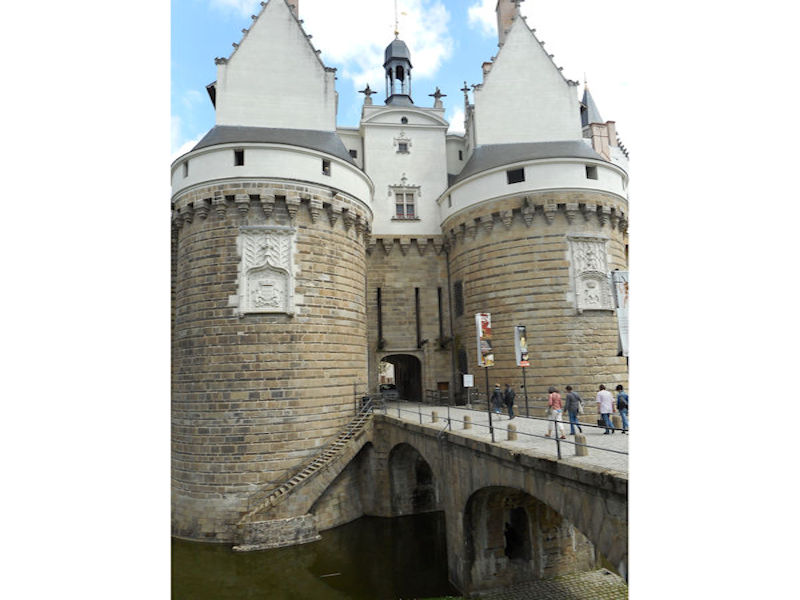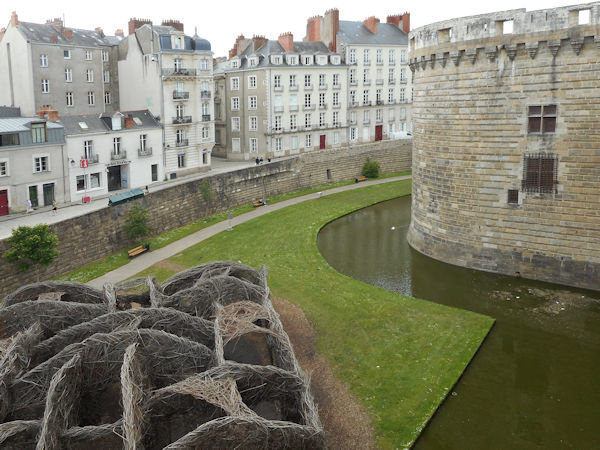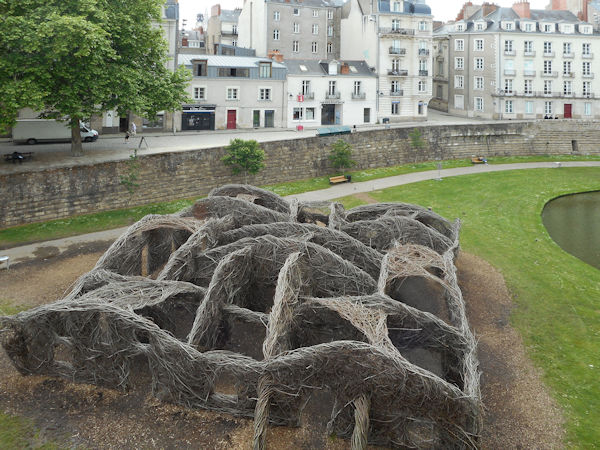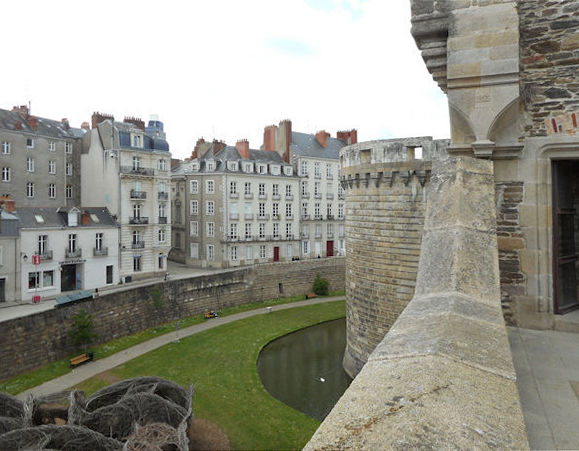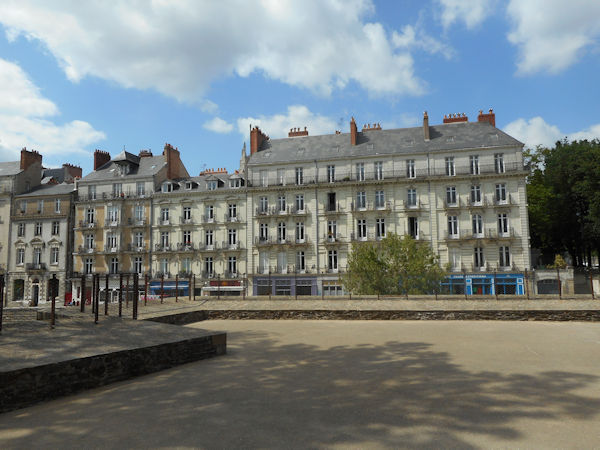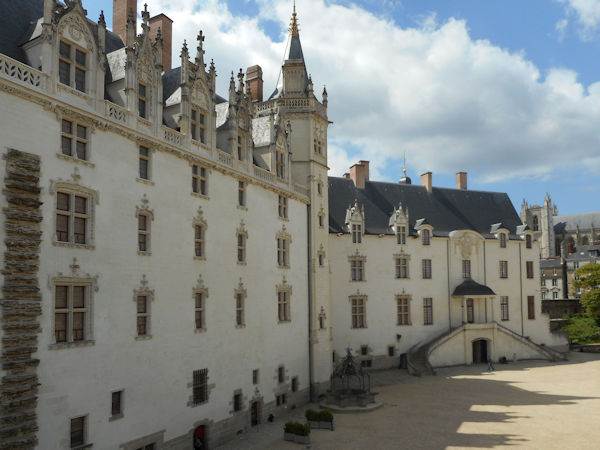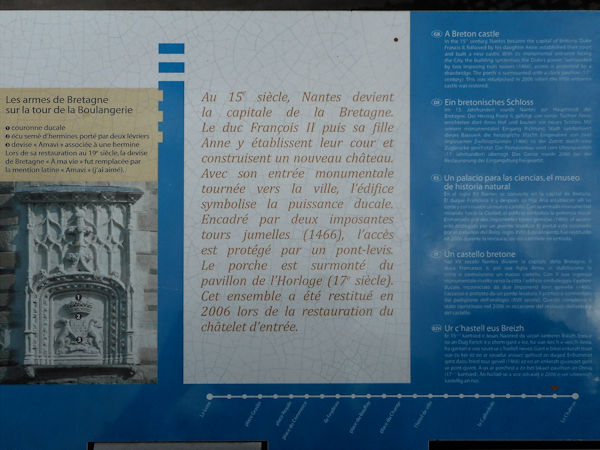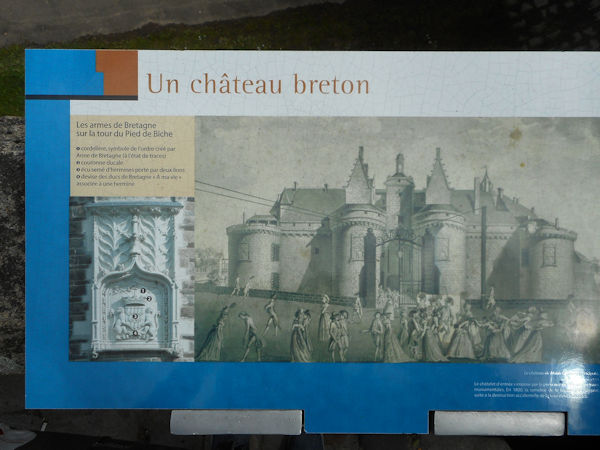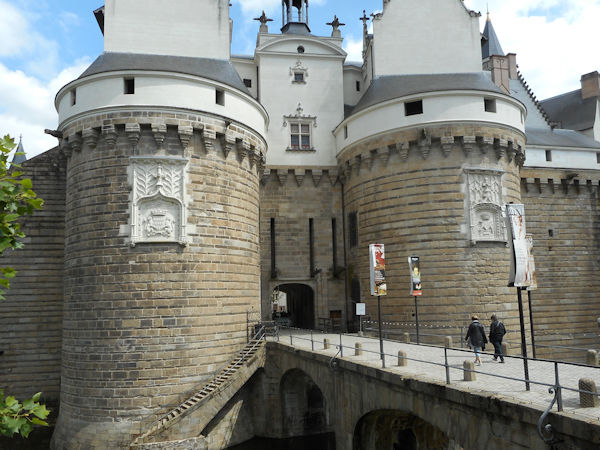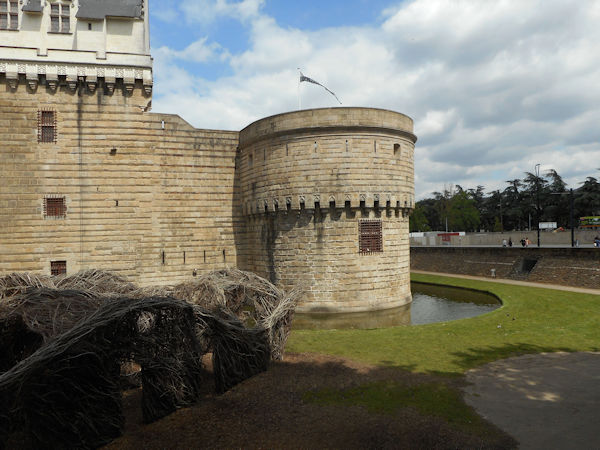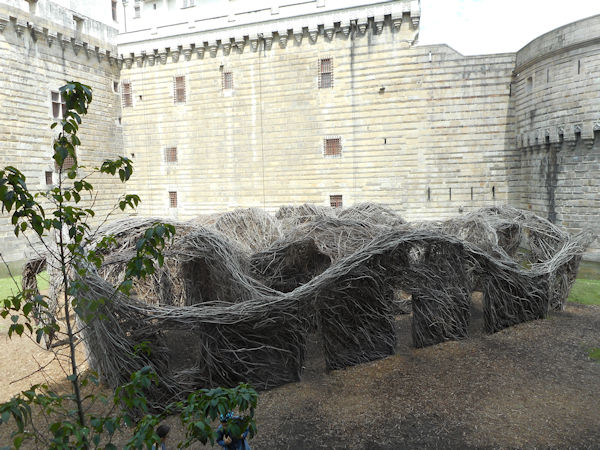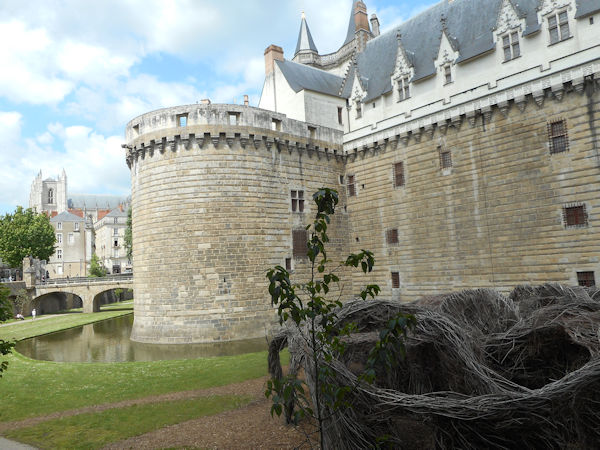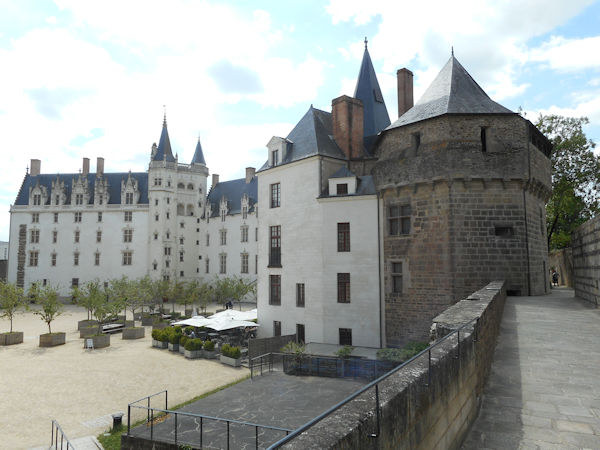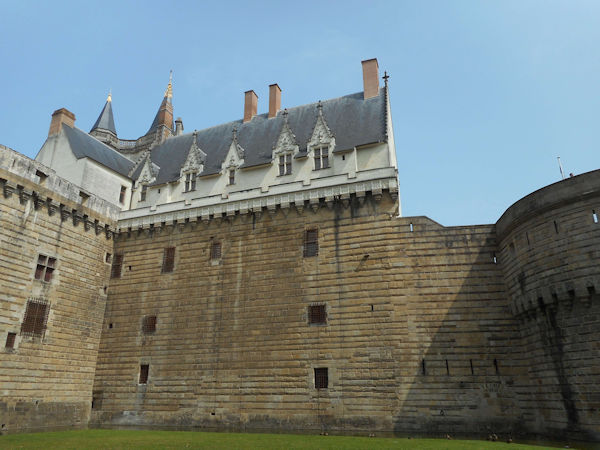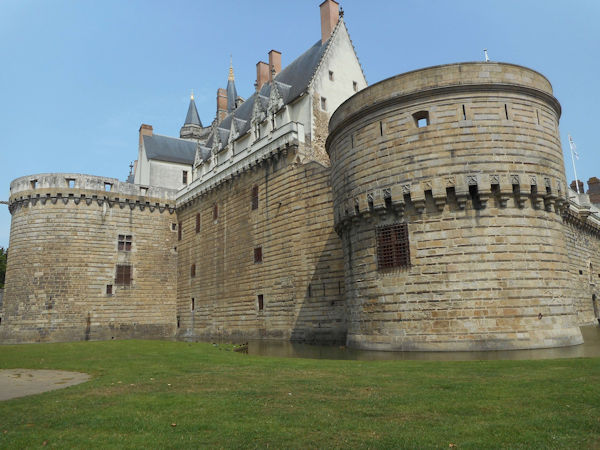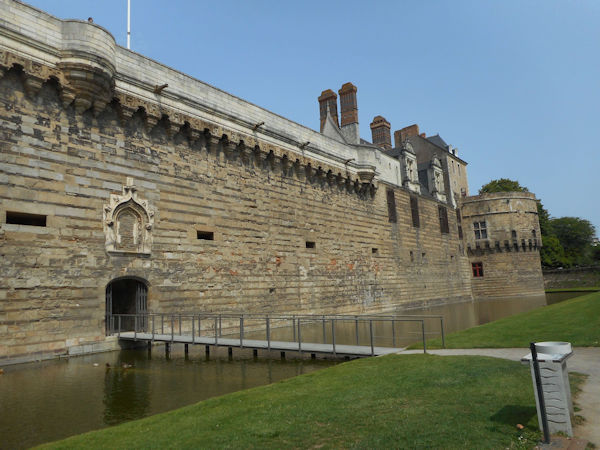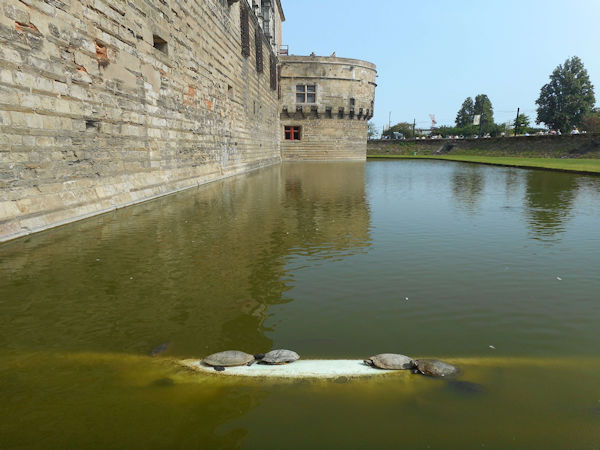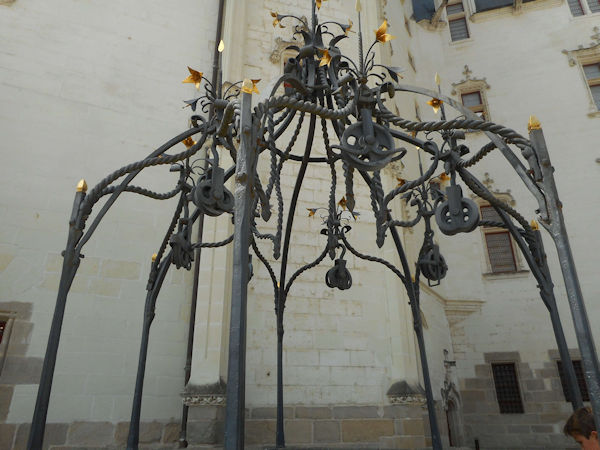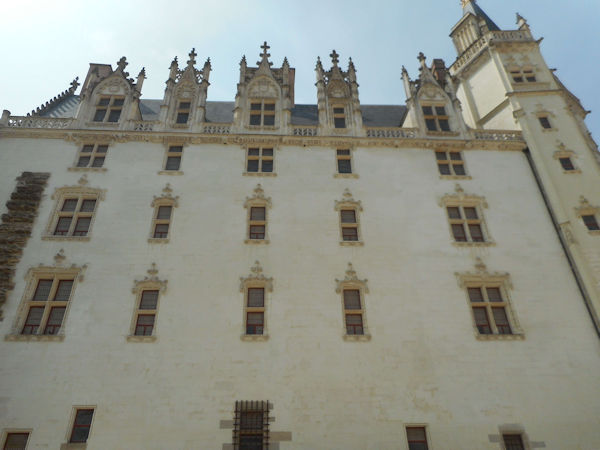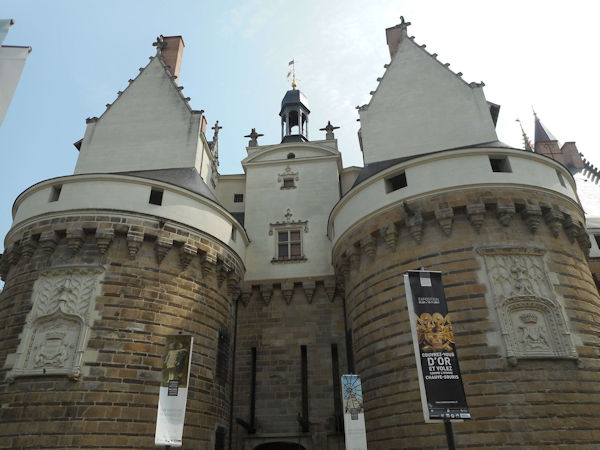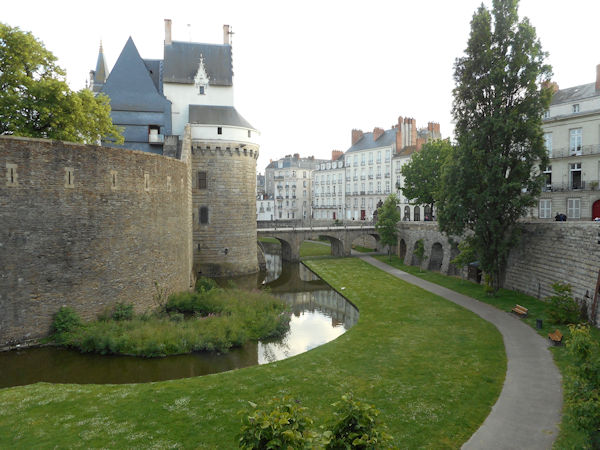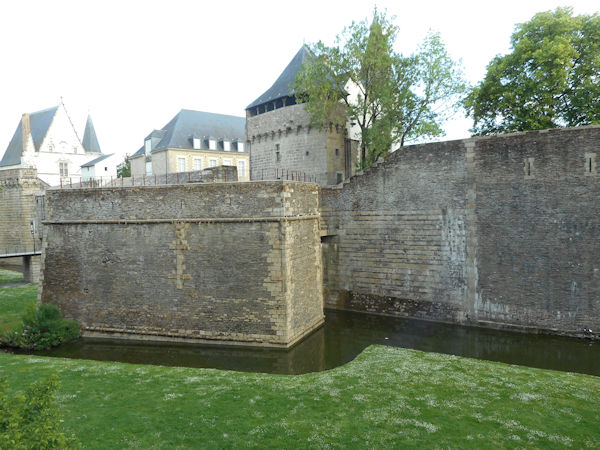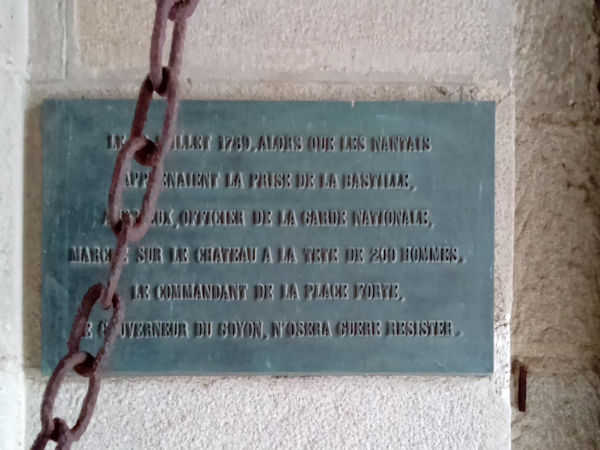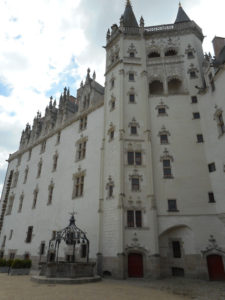
From the official website of Château de Bretagne
The monument
Set in the historic heart of Nantes, the Château des ducs de Bretagne is the city’s most important historic building, along with the Cathedral St. Pierre. When looking at it from the city, it is a fortress with 500 metres of curtain walls punctuated by seven towers, all linked by a sentry walkway. The inner courtyard reveals an elegant 15th century ducal residence made of tufa stone, in flamboyant gothic style and bearing the first traces of Renaissance inspiration, as well as other buildings dating back from the 16th and the 18th centuries. With their elegant white stone walls and sophisticated sculpted façades, they contrast strikingly with the rough textures of the exterior fortifications, made of granite blocks and separated by layers of schist.
History
The first ducal castle was built in the 13th century on top of the (still visible) Gallo-Roman wall of the town, where the Namnetes settled. It was demolished in the 15th century to make way for the present building. The current castle was the work of Francis II, the last Duke of an independent Brittany, who wanted to make the Château des ducs de Bretagne both a military fortress, which could act as a defence against the King, and the principal residence of the ducal court. Work was continued by Duchess Anne of Brittany, twice Queen of France through her marriages to Charles VIII and Louis XII. Her influence can be seen in the sculptural décor (dormer windows overlooking the main residence, as well as the coat of arms and loggias on the “Golden Crown” tower), marked by the first signs of the Italian Renaissance.
Following the integration of Brittany into France in 1532, during the 16th and 17th centuries, the Château des ducs de Bretagne became the residence of the kings of France when they visited Brittany, and later a military barracks, an arsenal, and a prison. For three centuries, it endured countless transformations and considerable damage: fortifications, a fire in 1670, construction of the Military Saddlery (Bâtiment du Harnachement) for storing artillery equipment, an explosion in 1800, and so on.
Listed as a historical monument in 1862, it was sold by the government to the City of Nantes in 1915 before also becoming, in 1924, a municipal museum. During World War II, the occupying German forces built a bunker there.
The renovation
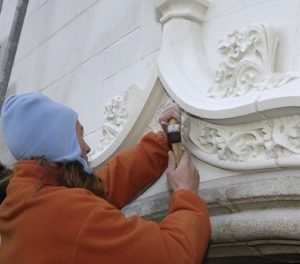
The 1990s focussed on restoring the Jacobins’ Tower (Tour des Jacobins), the façades of the Principal Governor’s Palace (Grand Gouvernement – 15c/17c) and the 15th century Golden Crown Tower (Tour de la Couronne d’Or). The Military Saddlery (Harnachement – 18c) refurbished in 1997, was used for temporary exhibitions.
In 2000 work began on restoring the white tufa façades of the main ducal residence (Grand Logis – 15c) to their full glory. These are the oldest and most impressive sections of the building, providing a link between the Castle of the Dukes of Brittany and the Loire Châteaux. The bell tower has been rebuilt and the spires have been replaced on the Golden Crown Tower (Tour de la Couronne d’Or). The interior of the ducal residence has also been completely restored and redeveloped to house the museum.
The restoration has brought out the full power of the Breton feudal fortress and the elegance of the Renaissance ducal palace.
The castle reopened in 2007.
CLICK Refresh FOR SLIDES
